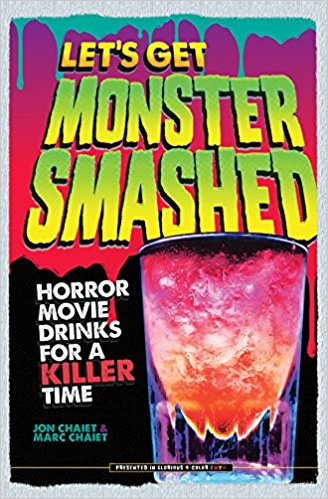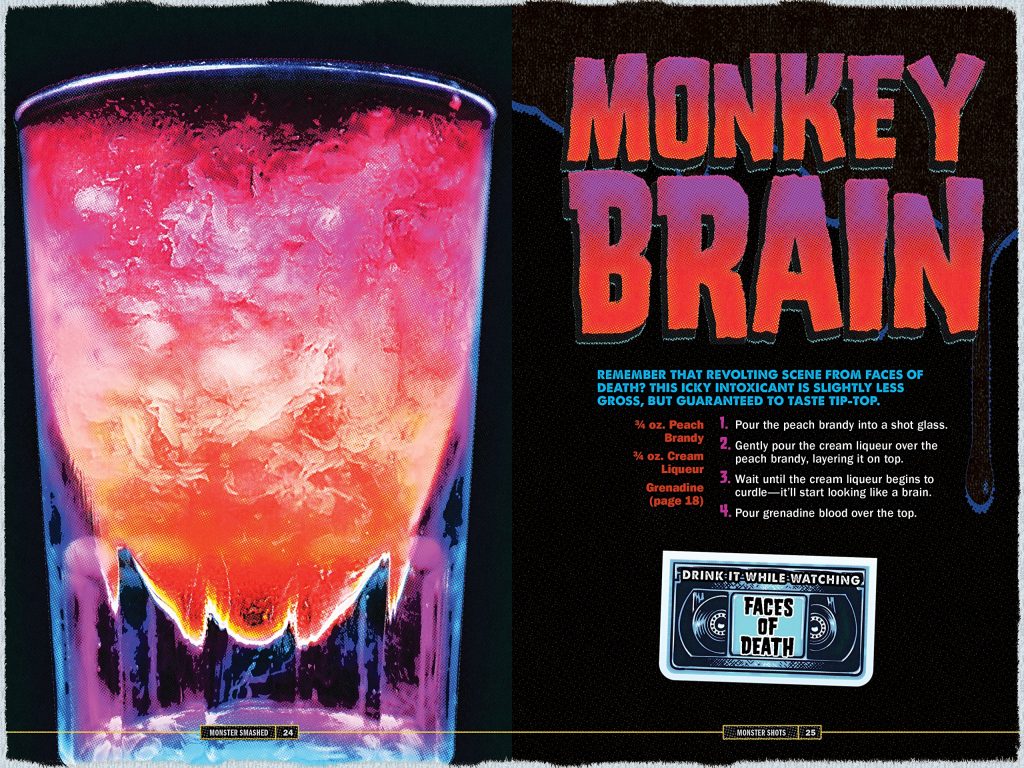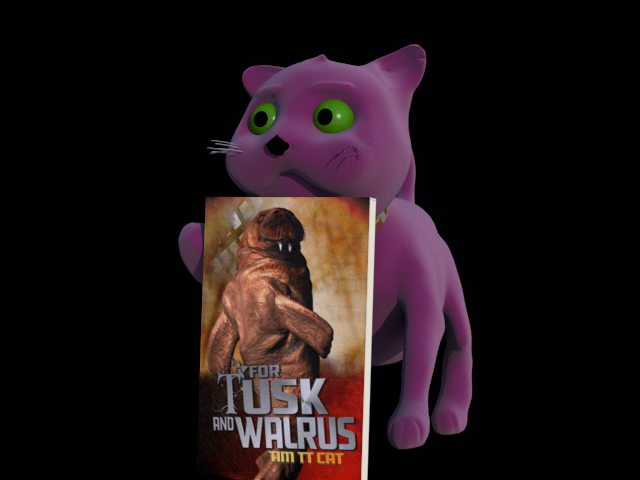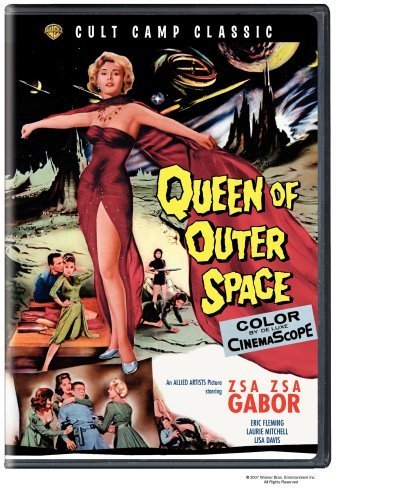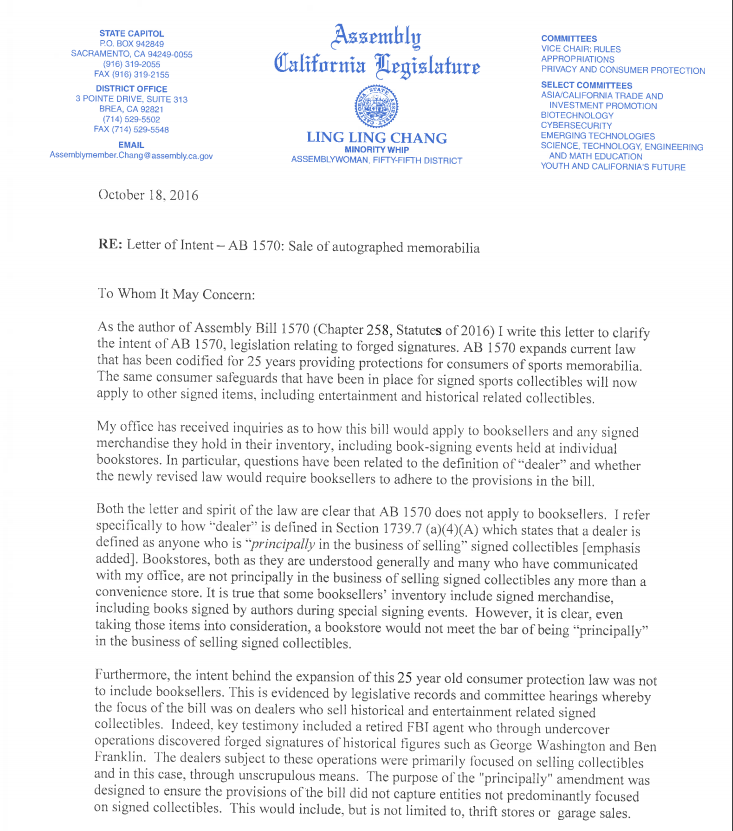(1) WHO NEWS. Jenna Coleman will be part of the Doctor Who Christmas Special reports The Sun:
Showrunner Steven Moffatt will also depart the BBC show at the end of the year and new reports claim the “Time Lord will bid a final goodbye to Clara Oswald as well as Bill Potts”.
A source told the Mirror: “Jenna Coleman has agreed to film something new as Clara.
“It’s become a tradition now for the companions to reappear as the Doctor regenerates and Jenna isn’t letting the side down.
“It’ll help to give Peter the send-off he deserves after three years.”
Jenna’s comeback is in line with the other companions returning to say goodbye as Billie Piper returned as Rose Tyler for David Tennant’s exit in 2009 and Karen Gillan also came back for Matt Smith’s farewell in 2013.
(2) ARACHNOANTHEM. Here’s the first two stanzas of Camestros Felapton’s awesome review of Spider-Man: Homecoming done to the tune of that theme song.
Spider film, spider film
I just went to see a new spider film,
Was it good? Listen bub.
It didn’t recap the story of how he got radioactive blood.
Watch out, its a quite good spider filmSpider theme, spider theme,
Movie starts with the spider theme,
Yes, you know that classic song
But without the words to sing along
Watch out, earworm spider theme…
(3) SPIDER FAN. NPR also likes Spider-Man: “‘Spider-Man: Homecoming’ Finds Its Footing With A Less Confident Spidey”
At last: A Spider-Man movie!
…says no one. The new Spider-Man: Homecoming, which celebrates Peter Parker’s immigration to the Marvel Cinematic Universe as a headliner after his scene-stealing appearance in Captain America: Civil War last year, is, according to the most recent data available, the sixth big-screen Spidey flick since 2002. Who needs another?
Well, if they’re going to be as fizzy and funny and warmhearted as this, keep ’em coming.
(4) SWEARING FOR SCHOLARS. Yesterday’s Scroll item about stfnal swearing prompted David Langford to note in comments that the Science Fiction Encyclopedia’s recently added its own article about “Swearing”.
…The tradition of swearing by God or a variety of gods has been sanitized and science-fictionalized in various ways, perhaps most famously by E E Smith in his Lensman sequence, whose spacefarers swear vigorously by the invented “space-gods” Noshabkeming and – especially – Klono. “By Klono’s TUNGSTEN TEETH and CURVING CARBALLOY CLAWS!” cries Kim Kinnison when surprised in Children of the Lens (November 1947-February 1948 Astounding; 1954); reference is elsewhere made to this entity’s golden gills, gadolinium guts, iridium intestines and so forth. Unusually, Kinnison in Gray Lensman (October 1939-January 1940 Astounding; 1951) offers a defence of such swearing by Klono to his wife-to-be (who thinks it rather silly):
He’s got so much stuff – teeth and whiskers, claws and horns, tail and everything – that he’s much more satisfactory to swear by than any other space-god I know of. […] A man swears to keep from crying, a woman cries to keep from swearing. Both are sound psychology. Safety valves – means of blowing off excess pressure.
(5) ARISIA’S SMOFCON SCHOLARSHIPS. The group that puts on Arisia also funds SMOFcon scholarships, $1000 to be divided among selected applicants. (They don’t just do a handy-dandy press release like the CanSMOF crew I publicized yesterday.) See Arisia’s application guidelines at the linked page.
(6) FORWARD THINKING. At Black Gate, Derek Künsken lists his choice of the “hardest” science fiction in “Any Sufficiently Advanced Technology…” The late Robert L. Forward figures prominently:
I found out about Robert Forward, a NASA scientist, when reading Stephen Gillett’s World-Building and so ordered it. Forward has some clunky character work and I wouldn’t say his female characters published in 1980 age well, but he outsciences Clement. I have four of Forward’s novels.
(7) A WALKING HISTORY OF SF TV. Joshua Sky has just completed and published a new interview on Omni with the showrunner of The Expanse, Naren Shankar:
Naren Shankar has a long-running career in science fiction television. He’s written for such critically acclaimed series as Star Trek: The Next Generation, SeaQuest DSV, Farscape, and The Outer Limits. Naren has also been a showrunner for CSI and currently serves as a showrunner for SyFy’s The Expanse. Coming from a science-educated background, Naren has been able to help push real science in television shows. I had the opportunity to chat with him and get his perspective on the evolution of genre TV, his career, and all things The Expanse.
You have an amazing TV background. You’ve done so many different shows. Walk me through your origin story.
…After graduating, I decided to stay on in graduate school. I was in Applied Physics and Electrical Engineering; I had stayed on in Cornell. And one of my friends decided he was going to move out to Los Angeles and become a screenwriter. We always loved movies, we always loved television shows and that was always sort of part of late night TV watching in the fraternity. And my other friend was Ron Moore.
Ron was a political science major. About a year after our first friend went out to LA to try and become a screenwriter, he dragged Ron out there. Now, I had started college really early. I just turned 16 when I entered college. I was really young and was two years ahead of Ron, but we were the same age. I was several years into graduate school as I was working on my doctoral research. The way I describe it, I started feeling more and more like an expert on a smaller and smaller corner of the universe. And it felt kind of isolating. So what started happening is that I began taking courses in the arts, and history and literature again. Actually doing them, while I was doing my research. And what was happening was that I found that side of things extraordinarily fulfilling, and my lab rather lonely.
I actually remember the moment. I was walking back from this amazing lecture in a course that I was taking on the history of American foreign policy. This yearlong course by a brilliant lecturer named Walter LaFeber. And I walked out of this lecture and I was heading to my lab and I was thinking, “Fuck, I can’t be an engineer.” (Laughter)
It was literally that kind of moment. But I had about a year and a half to go —and so, I gutted it out. I finished and got my degree. And then when I got out of school, I got a couple job offers and didn’t really like them. I almost got a job offer from Apple Computer, which I probably would’ve taken, as an engineering software evangelist, but I didn’t get it. It had come down to two people. So I didn’t get that and I didn’t really know what to do. Ron was out in LA and he was just starting to break into the business and get his first gig. He said, “Come and be a screenwriter!” And I was like, “… That sounds great!”
It was literally that much thought.
(8) JOAN LEE REMEMBRANCES. Entertainment Weekly’s Nick Romano, in “Revisit Stan and Joan Lee’s Sweet X-Men: Apocalypse Cameo”, has a still from the X-Men movie and a tweet from Bryan Singer about Joan Lee’s passing.
Also, Marvel Entertainment has released a video clip of Stan Lee telling about meeting his future wife for the first time.
On April 14, 2017 Joe Quesada, Marvel’s Chief Creative Officer, sat down with Stan Lee at the Paley Center in Beverly Hills, Calif. The video below was originally planned to be part of a series from the event scheduled for release later this year. In remembrance of Joan Lee and her importance to Marvel and the history of comics as a whole, we felt it appropriate to release this now.
(9) ELLIS OBIT. Nelsan Ellis (1978-2017): American actor and playwright, died July 8, aged 39 (heart failure). Genre appearances in True Blood (81 episodes as ‘Lafayette Reynolds’, 2008-14), Gods Behaving Badly (2013).
(10) TODAY IN HISTORY
- July 8, 2011 — NASA launched its last space shuttle, Cape Canaveral, Florida.
(11) COMIC SECTION. John A Arkansawyer warns there may be Wonder Woman spoiler in this (quite funny) installment of Non-Adventures of Wonderella.
(12) HANDMAID’S AUDIENCE. Damien Walter makes a provocative joke. Or is it true?
I’m seeing two distinct groups of responses to The Handmaid’s Tale.
Men – this show is dull, nothing is happening, going to stop watching.
Women – this show is horrifying! Its my worst nightmare played out scene by scene! Going to stop watching.
Not good for ratings.
(13) FROM THE ANCIENT SEAS. BigThink’s 2016 article “Antikythera mechanism” includes a link to a YouTube video about a working reconstruction – made with Legos.
In June of 2016, an international team of experts revealed new information derived from tiny inscriptions on the devices parts in ancient Greek that had been too tiny to read—some of its characters are just 1/20th of an inch wide—until cutting-edge imaging technology allowed it to be more clearly seen. They’ve now read about 35,00 characters explaining the device.
The writing verifies the Antikythera mechanism’s capabilities, with a couple of new wrinkles added: The text refers to upcoming eclipses by color, which may mean they were viewed as having some kind of oracular meaning. Second, it appears the device was built by more than one person on the island of Rhodes, and that it probably wasn’t the only one of its kind. The ancient Greeks were apparently even further ahead in their astronomical understanding and mechanical know-how than we’d imagined.
(14) HELLS YES. Steve Davidson sees the Worldcon on the horizon and urges fans to ratify the Three-Stage Voting proposal (3SV) that received its first passage at 2016’s business meeting.
One week from today, voting closes on the fabulous Hugo Awards. They’ll be handed out at Worldcon 75, being held in Helsinki, Finland, on August 12th, 2017.
The ballot this year is remarkably puppy free; that doesn’t mean there aren’t any puppy noms on the final ballot, but there aren’t any puppy-dominated categories as there have been in years past. It’s taken four-five years now, but WSFS (that’s the World Science Fiction Society, of which anyone who has joined this year’s con, or next year’s con, is a member. That’s right, Worldcon attendees and supporters, you’re all members of a WORLD society, not just a science fiction convention), in its slow, sometimes frustrating yet inexorable manner, has responded to the assault on the awards effectively.
In fact, there’s only one more step (well, two if you add in my suggestion that follows) required for forever ending puppy sadness: the ratification of 3SV.
Step 1: Ratification of Three Stage Voting. While this will turn Hugo Awards voting into a three stage, as opposed to a two stage process, and doing so will add more work for administrators and shorten the time frames for each stage a bit, the advantages FAR outweigh this.
3SV, as it has come to be known, will allow all of the voters to take an advance look at what will be on the final ballot, and then vote again on whether or not they BELONG on the final ballot. Finalists that receive above a certain number of “not on my Hugo Awards Final Ballot” will be removed and replaced by the next most eligible nominee(s)….
(15) SYNCOPATIC EQUATION. At Jed Hartman’s A + B = Awesome website, every time you refresh it you get an idea of the form “It’s A with/crossed with B with/in C.”
Tom Galloway says, “My favorite so far is ‘It’s Oliver Twist meets The Prisoner with dinosaurs,’ to which I came up with ‘Please sir, can I have some more information’ and a T Rex Rover.”
Renowned literary agent DongWon Song gave a great talk at this weekend’s SLF writing workshop, about how to pitch your work. One of the things he talked about is the idea of starting a pitch with the “A + B = Awesome” format, to suggest two other well-known works that your work is similar to in some way.
There was a lot more to the idea than that, but that part inspired me to put together a little pitchbot that provides suggestions for combining two works.
Note that this is intended entirely for entertainment purposes. (And it isn’t intended to criticize the “A + B = Awesome” paradigm, which is a far more useful pitching tool than I would have expected before hearing DongWon talk about it.)
A couple of writers who’ve seen this have said that it could also work as a writing-prompt generator.
(16) Q + P. Let’s play that game in real life – Tom Galloway introduces the next link:
In the grand tradition of Archie vs. The Punisher and Archie vs. Predator (Obj Dave Barry: I’m not making these up), come fall we’ll be getting Harley Quinn and Poison Ivy Meet Betty and Veronica.
Entertainment Weekly reports “Gotham and Riverdale to collide in Harley & Ivy Meet Betty & Veronica”.
The series will be co-written by Marc Andreyko and Paul Dini, with art from Laura Braga. Dini originally created Harley Quinn on Batman: The Animated Series, the show that also established the character’s flirty friendship with Poison Ivy. The new series will find them pitting their girl power against Riverdale’s most famous pair. When a proposal emerges to drain the wetlands between Gotham and Riverdale, Ivy sticks up for her beloved fauna by enlisting Harley to kidnap valuable heiress Veronica Lodge and her best friend, Betty. Chaos, you may assume, ensues.
Who wouldn’t pay to see that? (Raises hand.)
(17) THERE GOES THE NEIGHBORHOOD. First world problems.
https://twitter.com/OurValuedComics/status/873959254042038274
(18) SHADOW CLARKE JURY MARCHES ON. In less than three weeks the winner of the Clarke Award will be known. The Shadow Clarke Jury is getting in its last licks – will the sf genre go down for the count?
This statement will not be popular among the Wayfarer’s legions of loyal fans and advocates, but I’m going to make it anyway because I believe it to be true: there is no real science fiction in A Closed and Common Orbit. In a climate where novels of so-called literary SF are often castigated by SFF commentators for using the trappings of science fiction to grant legitimacy and authenticity where none has been earned, when it comes to empty gestures the Wayfarer novels – clasped rapturously by fandom to its collective bosom – trump them all. I would not want to waste valuable time arguing over whether A Closed and Common Orbit is in fact eligible for the Clarke Award – the book is marketed as science fiction, there are AIs, aliens, distant planets, job done. Whether it deserves its place on the current shortlist is another matter entirely.
Organising and participating in this year’s shadow Clarke jury is turning out to be a pleasure on multiple levels, not least exchanging thoughts and opinions and discoveries with my fellow Sharkes. Speaking purely for myself though, the most significant effect of this experiment has been to make me question the very validity of ‘science fiction’ as a literary genre. In a literary landscape where everything is up for grabs, and where the tropes of science fiction – time travel, genetic and social engineering, apocalypse scenarios of every variety, artificial intelligence and mass surveillance – are increasingly becoming both core subject matter and metaphorical framing device for novelists of every nation and literary inheritance, can we usefully continue to argue for science fiction as a literature apart, worthy not just of separate study but of special pleading?
There are, in broad terms, two types of fiction. For convenience, although I am not happy with either term, I shall call them mode and genre. A genre work might include crime fiction, ghost stories, love stories and so on; they are identified by the type of story they tell. A war story would not count as a war story if war itself was not central to the story, if it did not include the familiar markers of battle, soldiers or any of the expected paraphernalia and effects of war. Modes, on the other hand, might include contemporary mainstream literature, historical fiction and science fiction. These are identified less by the the story told than by setting, style, affect, and other less readily defined characteristics. There is no specific type of story that must be told if a work is to count as historical fiction, it may be a love story or a war story or a story of political intrigue, but it must be set in the past.
I thought my feelings about this book were all sewn up. I actually began drafting this review with a hundred pages still to go, so secure did I feel in my opinion of After Atlas as the Clarke equivalent of His Bloody Project in last year’s Booker line-up: my hands-down favourite as a reading experience, though perhaps insufficiently innovative or controversial to justify its winning. And then came the ending, the unveiling of the central mystery, and I found myself thinking back to the autumn of 2015, when I went to see Guillermo del Toro’s lavishly over-produced haunted house movie Crimson Peak. I wasn’t expecting much from that movie, if anything, and so I spent the first hour and a half feeling excited at how wrong I’d been in my prejudgements. The film looked amazing, as predicted. Far more surprising was the conviction of the performances and – what’s this?? – a strongly scripted storyline I actually cared about. I began mentally drafting a blog post: how wrong I’d been about this film, how Del Toro had actually managed to square the circle and make a genuinely decent horror movie whilst operating within commercial constraints.
Since the 2013 all-male Clarke shortlist, it’s been assumed that Clarke jurors have been striving for gender parity of authors when constructing their shortlists, but more recently, through the data analysis of Nicola Griffith, we’ve become aware of the even greater problem of protagonist gender disparity: Apparently, genre readers and critics prefer to award books about males, regardless of author gender. I’ve often noticed that this is particularly true of the of the investigative-type police procedural mystery narratives, a modality SF writers often like try on, and exactly true of the police procedural selections on both the Clarke and Sharke lists.
While I wouldn’t be so hyperbolic as to say there is a deafening silence about female investigative protagonists, because there are a ton, but within SF, and especially within the SF book awards machine, the general perception of this mode is that it belongs in the masculine realm. The pragmatic, dogged, stiff upper lip investigator is a common, easy mold for authors to sink into, and although women protagonists could easily slip into that role, we readers, unfortunately, get more Mulders than Scullys.
Two novels that don’t appear to have anything in common, but are written by two powerhouses of opposing camps of the British literary community: Clarke winner and regular fan favorite, Tricia Sullivan, and Baileys Prize winner and regular contributor to various media on all things sci-fi, Naomi Alderman. Within the cloisters of British science fiction, these are two famous SF writers with a persistent presence in the field, yet neither has managed to vault over the high, imposing barbed walls of American commercial success.
It’s no secret that The Wayfarers series is written by someone whose writing is heavily influenced by the two-dimensional, wrap-it-all-up-before-the-credits, don’t-scare-off-the-advertisers format of television, so it’s no surprise to me that this book reads like a novelization of a TV/movie that has already been made. (No, I’m not talking about Firefly. This series is nothing like Firefly.) Fans and reviewers have been hooked by the low-risk palling around of characters, the exotic alien foods, and the explainy, back-and-forth dialogue that attempts to teach open-mindedness. It is Doctor Who without the danger and squirm; Farscape without the oppressive political foes, Friends without the humor and occasional cringe.
Of all the six Clarke-listed novels, The Underground Railroad best does what I think a Clarke-winning novel should do. It has Handmaid’s Potential: it employs the tools of science fiction (anachronistic technology and alternate settings and timelines) to examine and illuminate the present reality, and will make more sense to people of the future than it does right now because we are too embedded in the system that it critiques. It’s the only novel on the list that I think will be remembered and still considered important in twenty years.
Some might be surprised to see that I’ve ranked A Closed and Common Orbit above Occupy Me, but at least ACACO does what it sets out to do—which is very little—while Occupy Me just feels messy and careless, a frivolous taking on of experimentation and entertainment that achieves neither.
(19) SPIRITED CINEMA. NPR seems ambivalent about this strange film: “In ‘A Ghost Story,’ A House Is A Home For All Time”
Through much of A Ghost Story, Casey Affleck or a stand-in plays a dead soul, draped in a sheet with cut-out eye holes. This low-budget approach to the supernatural might suggest that writer-director David Lowery is playing a Halloween trick on movies that take the paranormal seriously. Except that he opens the tale with a line from “A Haunted House,” a story by Virginia Woolf, not Stephen King.
(20) THE MARS MY DESTINATION. Meanwhile, the Mars project David Levine was on now has a cast of high schoolers: “To Prepare For Mars Settlement, Simulated Missions Explore Utah’s Desert”.
Victoria LaBarre was climbing out of a canyon and into a bright, vast, seemingly lifeless landscape when she started to experience an astronaut’s nightmare.
“Suddenly,” she said, “I couldn’t breathe.”
The symptoms were real — maybe from claustrophobia, or from exertion at high altitude. But LaBarre didn’t unlatch her helmet to get a breath of fresh air because, in this simulated Mars exercise in the Utah desert, she was supposed to be an astronaut. The canyon was standing in for Candor Chasma, a 5-mile-deep gash in the Red Planet’s surface. On Mars, there’s no oxygen in the air — you do not take off your helmet.
So, instead, LaBarre radioed for help from fellow members of Crew 177. The team of students and teachers from a Texas community college had applied together to live and work for a week this spring in a two-story metal cylinder at the privately run Mars Desert Research Station near Hanksville, Utah.
(21) BOOS AND BOOZE. You’ll feel no fear (or much of anything else) after a few of these — Let’s Get Monster Smashed: Horror Movie Drinks for a Killer Time will be out in hardcover on August 28.
A horror movie inspired cocktail book with gross-looking but delicious party drinks, all wrapped up in an awesome ’80s VHS package. There are 55 recipes spread across 5 chapters (shots, gelatin, punches, special fx, and non-alcoholic) inspired by classic pulp horror movies of the ’80s and ’90s, complete with viewing recommendations. The movies may be weird, the drinks may look gross, but the elevated drink making techniques and unusually tasty recipes keep readers and their guests interested and coming back for more. Great for theme parties, Halloween festivals, movie fans, and retro enthusiasts.
[Thanks to Tom Galloway, JJ, Chip Hitchcock, Martin Morse Wooster, Steve Green, Carl Slaughter, John King Tarpinian, David Langford, and John A Arkansawyer for some of these stories. Title credit goes to File 770 contributing editor of the day Andrew.]

